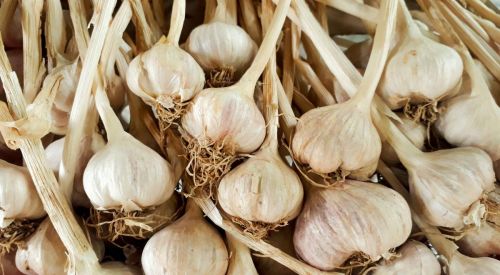According to the U.S. Centers for Disease Control and Prevention, watercress is one of the healthiest plants. Although it is one of the oldest plants in the world, little has been said about it so far, and if anything, in the context of medicinal use. Meanwhile, it is a small plant with a peculiar flavor, which is entering our daily menu with vigor because it is tasty, valuable, and inexpensive - anyone can grow it for themselves.
The cabbage family, once called the cruciferous family, has 343-353 genera and about 3630-4010 species. Brassicas are found on all continents except Antarctica and are not found in dense areas of lowland equatorial forests. Many plants in this family are of great utilitarian importance (vegetable cabbage, cabbage proper, rapeseed, rocket, watercress, and others).
As an imported species, it has spread to almost all continents of the world.
In Poland, it is considered a native, arboreal species, and as of 2014, it is under partial species protection in our country (it is placed on the Polish list in the NT - near threatened category).
It also occurs quite extensively in the Czech Republic and Moravia.
It is a plant with an ascending, angular, rooting stem, and alternate, unpaired leaves. Close clusters of tiny white flowers, with stalks that lengthen as they bloom, appear at the top of the branching stem. The plant blooms from June to September. The fruit is a curved scutellum (a dry, bursting fruit) up to 5 mm long. Watercress grows up to 60-80 cm tall.
Its health-promoting properties have been known since ancient times. The Egyptians served workers the juice of fresh watercress in the belief that it would increase their productivity at work. The ancient Greeks were convinced that watercress increased intellectual abilities. It was also valued by Napoleon. It was also an ingredient in the menu prepared for Prince William's wedding to Duchess Kate at Buckingham Palace (it was served as an ingredient in a tart - asparagus with watercress).
It helps with constipation, has anti-cancer effects, boosts immunity, helps with liver disorders, and coughs, and modern phytotherapy recommends it to soothe nerves. It also lowers triglycerides and LDL cholesterol. It has a beneficial effect on blood clotting and helps with heavy menstruation.
Among the minerals are potassium, calcium, magnesium, zinc, manganese, iron, phosphorus, sodium, copper, and selenium. It contains a lot of vitamins: K, A, C, E, and B (B3, B6, B2, B1). It is richer in vitamin C than an orange, has more vitamin E than broccoli, contains more iron than spinach, is a richer source of calcium than milk, as well as contains more beta-carotene than carrots or more potassium than tomatoes. It also contains lutein and zeaxanthin, as well as flavonoids.
It is rich in amino acids.
Compounds belonging to this group are considered anti-cancer substances, having the ability to inhibit the growth of cancer cells, such as in the case of breast cancer.
It is then dried in the shade, separated from other herbs due to the strong odor given off by the cress. A decoction of the cut herbs can be used, or fresh juice diluted with water can be drunk.
It supports the treatment of rheumatism and has diuretic properties. An extract of this plant (glyconasturcin) is given for avitaminosis.
Due to its distinctive flavor, it is an addition to various dishes, enriching their taste. It is sometimes an ingredient in salads along with tomato or spinach. It can be used to make pesto (only from it or as an addition to a standard one). It goes well with meat dishes and is sometimes an ingredient in cocktails. It has a wide range of uses, from soups (such as pea and arugula soup) to desserts. It works best in fresh salads, cold sauces, vegetable pastes, and sandwiches.
It forms a good combo with cream and butter, which makes it possible to use it to make sauces for fish, pâtés, vegetarian tarts, white meat dishes, and cream soups. The French add it to anchovies, so they no longer use salt or pepper.
It is undemanding, needing only a fair amount of water and adequate sunlight. Leaves are detached from the growing plant, and new leaves appear in their place, in greater numbers.












